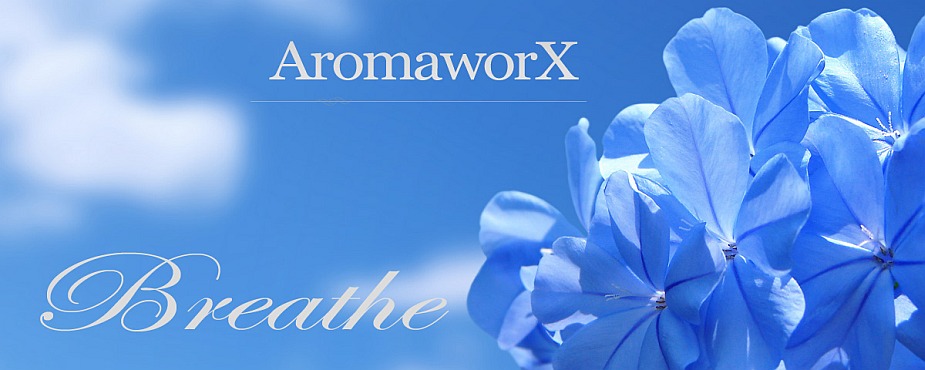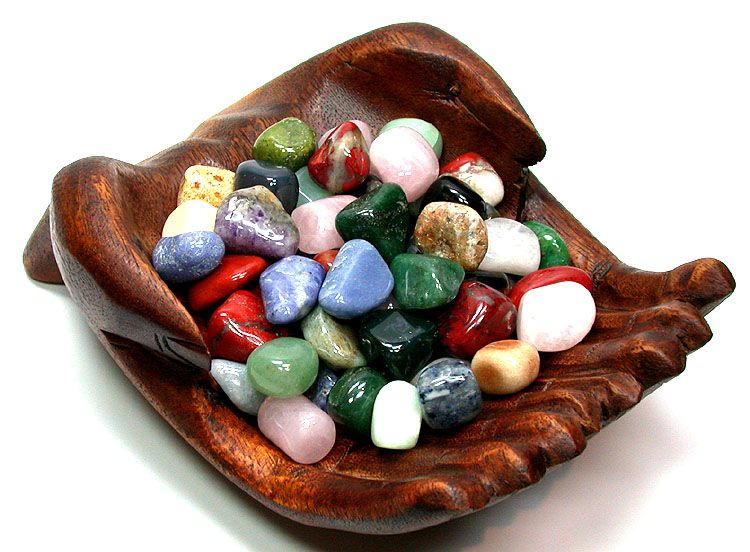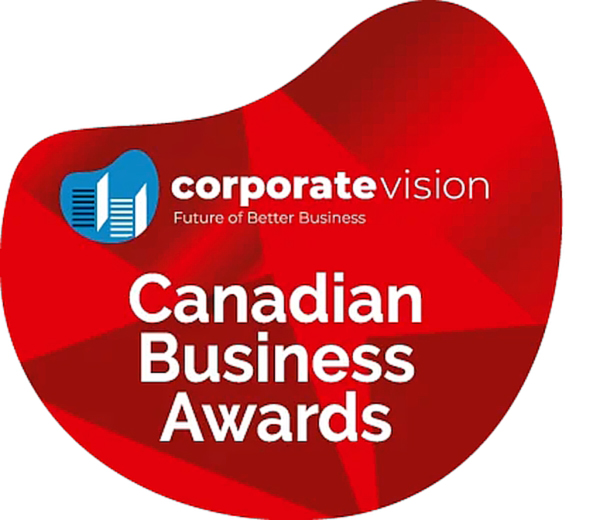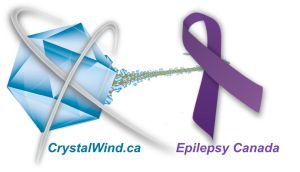Reflexology
- Details
- Written by AndEl
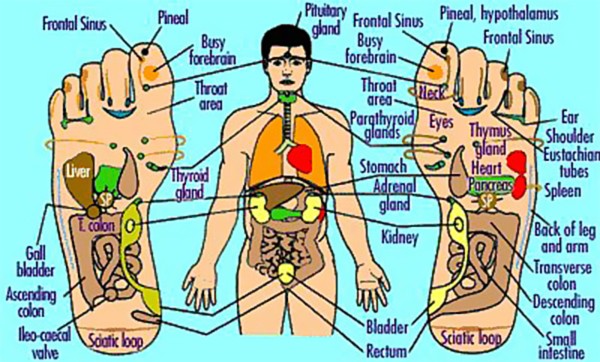
Reflexology is the practice of applying pressure to the feet and hands utilizing specific thumb, finger and hand techniques without the use of oil, cream or lotion based on a system of zones and reflex areas that reflect an image of the body on the feet and hands with a premise that such work effects a physical change in the body.
Reflexology Chart
A reflexology chart mirrors a reflection of the body on the feet and hands, left foot or hand representing the body's left half and right foot or hand its right half. In reflexology practice, technique is applied to the relevant reflex area(s) to prompt a change in the related part of the body. Research has demonstrated such effects for several reflex areas and their reflected parts of the body, i. e. the kidney reflex areas and the kidneys; the intestine reflex areas and the intestines and the brain reflex area and the brain.
The history of reflexology
Around the world and throughout history, reflexology has been rediscovered time and time again. Archeological evidence points to ancient reflexology medical practices in Egypt (2330 BCE), China (2704 BCE) and Japan (690 CE).
In the West, the concept of reflexology began to emerge in the 19th century with European and Russian research into the nervous system and reflex- think Pavlov. Reflex therapies were created as medical practices but were soon eclipsed by use of surgery and drugs. The ideas of reflex use for health improvement were carried on sporadically and brought to American in 1909 by Dr. William Fitzgerald The ideas of reflex use for health improvement were carried on sporadically and brought to American in 1909 by Dr. William Fitzgerald. Dr. William H. Fitzgerald, an ear, nose, and throat doctor, introduced this concept of "zone therapy" in 1915. American physiotherapist Eunice Ingram further developed this zone theory in the 1930's into what is now known as reflexology.
In the East, ancient Chinese techniques were re-discovered in the 1980s and have spread throughout Asia creating today's reflexology-rich environment with reflexology paths in parks and a thriving reflexology industry of practitioners, businesses and research.
The benefits of reflexology
Research has shown the specific techniques of reflexology to be effective and beneficial in many ways. A survey of 170 reflexology studies from 21 countries shows that reflexology is effective, impacting a variety of physical and psychological concerns.
Reflexology:
Creates relaxation: From the moment the reflexologist’s hands start their work, the relaxation begins as shown in research using EEG brain activity. All together, 24 studies demonstrate reflexology’s relaxation effects.
Reduces pain: Pain reduction following reflexology work is documented in 27 studies including research showing impact on individuals of all ages and health states
Ameliorates health concerns: Research shows that reflexology work helps individuals of all ages with some 78 health concerns ranging from aggressive behavior in children to urinary concerns of the elderly.
Improves blood flow: Separate studies show that reflexology work increases blood flow to the feet, brain, kidneys and intestines.
Aids post-operative recovery: Reflexology work aids recovery after surgery as shown by several studies, reducing pain and lessening the use of post operative analgesics.
Impact on physiological measures (e. g. blood pressure and cholesterol; measurements by ECG, EEG, and fMRI)
Enhances medical care: Reflexology helps where nothing else can for many: phantom limb pain sufferers, neuropathy patients, and hemodialysis patients to name a few.
Benefits mental health: Research demonstrates that reflexology can reduce depression and anxiety.
Complements cancer care: Pain, nausea, vomiting, and/or anxiety eased for chemotherapy patients following reflexology work as shown by 16 studies from 7 countries.
Eases pregnancy, delivery and post-partum effects: Women who received reflexology experienced shorter labor times and used less analgesia. In addition, reflexology showed a positive impact on postpartum depression, anxiety, urination and bowel movements.
In general terms, the benefits of reflexology have to do with the reduction of stress. Because the feet and hands help set the tension level for the rest of the body, they are an easy way to interrupt the stress signal and reset homeostasis, the body's equilibrium.
Reflexology is a complement to standard medical care. It should not be construed as medical advice. It should not be a replacement to medical help. Please use it wisely. We care about your safety.
Getting results with reflexology
For best results, apply reflexology techniques to targeted reflex areas consistently. This can be accomplished with self reflexology techniques, those applied by family as well as with the guidance of the professional reflexologist.
You yourself can most easily provide reflexology work frequently and consistently, using self applied techniques to break up the stress patterns in your feet and hands. Apply pressure simply using a foot roller or, for the hands, a golf ball. Think morning, noon and night. Build reflexology into your life. It is easy to do reflexology while doing other activities. Put a foot roller under your desk at work, use a golf ball on your hands while waiting for the kids at school or do either while watching television. Be creative in how and where you apply techniques but be consistent.
Reflexology applied by family or friends provides several benefits: application of pressure techniques, non-invasive touch and an opportunity to visit.
The reflexologist can provide you with a relaxing experience, quality technique application as well as educate you in how to do it yourself.
Reflexology Research
Literally hundreds of reflexology studies have been conducted. Our survey of 170 studies show a positive result for 83% of areas researched. A Chinese survey of 8,096 case studies noted a 94% effective or significantly effective rate. Significant areas of study include: stress and anxiety; lessening of pain and cancer care as well as health concerns for individuals of all ages.
Stress and Anxiety
Lessening of stress and anxiety is demonstrated in twenty-nine reflexology studies with study participants including healthy individuals, senior citizens, women and cancer patients. The stimulation of reflexology's pressure techniques creates change in the body's basic level of tension as demonstrated by research showing that reflexology relaxes the body using a variety of measurements: brain waves (EEG), blood pressure, systolic blood pressure, diastolic blood pressure, pulse rate, and anxiety.
Lessening of Pain
Reduction of pain is a significant result of reflexology work. The lessening of pain in response to reflexology is documented in thirty-six studies including individuals of all ages and health states: birthing mothers, menstruating women, phantom limb pain sufferers, lower back pain sufferers, cancer patients, kidney stone patients, senior citizens and individuals with pain resulting from surgery. Such results find explanation is what researcher Dr. Nancy Stephenson considers as affect on the neuromatirx of the brain, an expansion of the Fate Control Theory of Pain. According to Wikipedia: "Gate control theory asserts that activation of nerves which do not transmit pain signals, called nonnociceptive fibers, can interfere with signals from pain fibers, thereby inhibiting pain." Stimulating nerves that sense touch, heat, cold and pressure- as does reflexology- overcomes the action of the pain nerves.
Cancer Care
Twenty-four studies conducted by nurses in ten countries show that reflexology helps with each stage of the cancer experience: following chemotherapy, postoperative, management of symptoms and during palliative/hospice care. Research demonstrates that cancer patients who receive reflexology work show significant improvements in physical and emotional symptoms: lessened pain, anxiety, depression and stress; reduced nausea and vomiting; lowered fatigue and improved quality of life.
Research by Age Group
Children: Aggressive and anti-social behavior in children, Asthma, Cerebral palsy, Colic, Encopresis (Fecal incontinence / Chronic constipation), Enuresis, Premature babies
Pregnant Women: Birthing / Delivery: Pain killing, Lessened analgesia use and labor time; Lactation in new mothers;
Post-partum women: Recovery from Cesarean section / Gastrointestinal function / Urinary system, Sleep, Anxiety and depression
Adults: Headache, Sleep, Constipation, Kidney function, Intestinal function, Pancreas function, Circulation, Diabetes, Multiple sclerosis, Dyspepsia, Sinusitis, Cholesterol
Women: Constipation, Fatigue and Sleep States, Cortisol, Incontinence, Menopause, Middle-aged women (Depression, stress responses, immune system), Migraine headache, Polycystic ovaries, Premenstrual syndrome
Men: Incontinence, Post prostatectomy surgery, Post traumatic stress syndrome, Prostate (Enlarged), Urination, Depression and fatigue
Elderly: Blood pressure, Constipation, Hypertension, Sleep, Depression, Falls (Control over), Nursing home patients with dementia (reduced pain, depression, blood pressure), Nursing home residents, Stroke
How reflexology works
Reflexology works as the pressure techniques applied to the feet or hands interact as a part of the body's nervous system creating: relaxation, improved circulation, exercise of the nervous system and the benefits of touch.
Pressure sensors in the feet and hands are a part of the body's reflexive response that makes possible the "fight or flight" reaction to danger. Feet ready to flee and hands ready to fight communicate with the body’s internal organs-think adrenal glands and adrenal... to make possible either eventuality. The sudden adrenal surge that enables a person to lift a car is an example of this coordinated activity. The perception of pressure by the feet and hands taps into the reflex network that makes possible our every move. Reflexology, consistently applied, provides an exercise of these pressure sensors and thus a conditioning of the internal organs to which they are inextricably tied.
Techniques used in reflexology
Pressure is applied to the feet and hands using specific thumb, finger and hand techniques. Stretch and movement techniques are utilized as "desserts" to provide relaxation to the foot. Oil, cream and lotion is not utilized in traditional reflexology work. Tools or instruments- such as a golf ball or wooden foot roller- are used for self help application only.
What should I expect from a reflexology session?
Reflexology sessions last from 30 minutes to an hour. The client sits in a reclining chair placing the feet conveniently for the reflexologist's work. The reflexologist use pressure, stretch and movement to work through the foot methodically. Technique is applied to the whole foot or hand. Sit back and relax. Or, ask for an on-going assessment of stress cues of the feet; education in the location of reflex areas of the feet or education in how to apply self reflexology techniques. Ask about research relevant to your health concern.
You should feel relaxed at the end of a session. How long that relaxation lasts is a good indicator of the effectiveness of the session. Make note of this and tell your reflexologist your response to the session at the next session. This can be helpful information to the reflexologist.
Expect the reflexologist’s application of technique to be within your comfort zone- not too heavy and not too light but at a level within your personal preference. Communicate this preference to the reflexologist. Expect technique application to be "dry," without the use of oil, cream or lotion. Use of these emollients constitutes a foot massage and not a reflexology session. Use of any tool or instrument is outside the professional scope of practice for a reflexologist.
Do not rely on a reflexologist for medical help. The reflexologist is limited to complementing medicine not replacing it.
What can a reflexologist tell me about my health?
Reflexology assessment takes place as stress cues are evaluated. Stress cues show adaptation to stress in a part of the foot or hand or a reflex area that reflects stress in the body. Adaptation is shown by visual signs such as callusing, knobby toes or a bunion. Indications of stress are also seen as sensitivity to technique application or touch signs perceived by the reflexologist as technique is applied. The assessment of such stress cues allows the reflexologist to target areas of stress and to design a session of pressure technique application appropriate to provide relaxation specific to the individual.
A reflexologist cannot diagnosis or prescribe. Also remember reflexology is an adjunct to medical help not a replacement for it. You should seek medical help if you have an urgent or acute problem.
Liked this article? Dive deeper into personal growth and wellness! Check out CrystalWind.ca for spiritual wisdom or explore AromaWorx.ca for natural well-being tips. Spread the positivity—share this with friends on their happiness journey!
Let’s Chat! Drop Your Thoughts Below! ![]()
Disclaimer Health
All post and information provided within this blog is for educational and informational purposes only, and is not to be construed as medical advice or instruction. No action should be taken solely on the contents of this website. Please consult with your healthcare professional before making any dietary or lifestyle changes or taking supplements that may interfere with medications. Any products or information discussed are not intended to diagnose, prevent, treat or cure any illness, disease or lifestyle. Please consult your physician or a qualified health professional on any matters regarding your health and wellbeing or on any opinions expressed within this website.
Latest Articles

Imagine a world of inspiration and healing, free for all—made possible by YOU!
Donate Now—Ignite the Magic at CrystalWind.ca!
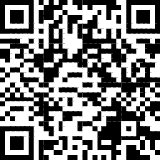
Epilepsy - Finding A Cure
Your donation can make a difference!
Help us find a cure – donate now!
Unlock Your Light: Join Lightworkers Worldwide on CrystalWind.ca!
Follow Us!
Featured This Month
The Vine: September 2nd - September 29th
The Autumnal Equinox ( Alban Elfed ) Celtic Symbol : The White Swan Read more
Crystals for Virgo
As the warmth of summer begins to soften into the crispness of autumn, the Sun... Read more
Mabon in Modern Times: Fresh Takes on the Au…
The Mabon season begins somewhere around the 21st-22nd of September and cont... Read more
Watermelon Tourmaline
Synonym: Rainbow Tourmaline The watermelon tourmaline is a rare variety t... Read more
Peridot: The Healer's Stone
Peridot has been used as a Power Stone for centuries. Peridot fosters emotio... Read more
Sweet Violet
Sweet Violet Faithfulness and modesty. “I will always be true to you.” Helps... Read more
Virgo Mythology
The Virgo Myth In all of constellation mythology, few legends are as misund... Read more
Sun in Virgo
An Overview of Sun Sign Characteristics for Virgo Virgo is guided by Mercur... Read more
Mabon Magic: Ideas For Fall Decoration And R…
Welcome (almost!) to Fall! We’re turning the Great Wheel once again, toward ... Read more


